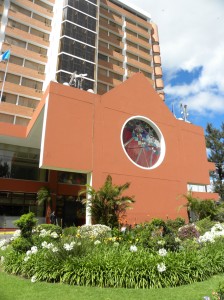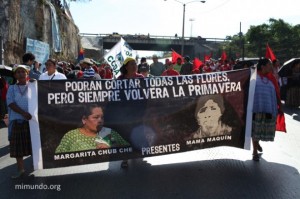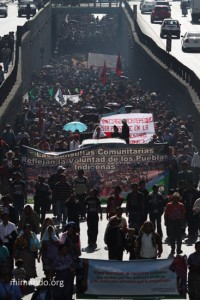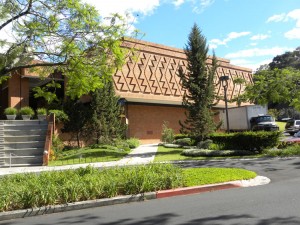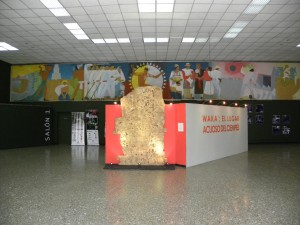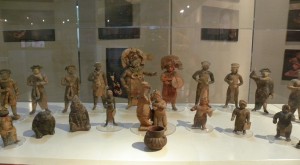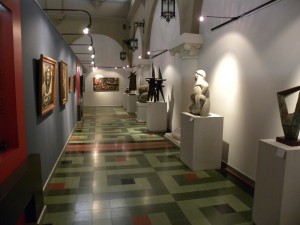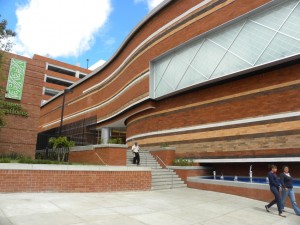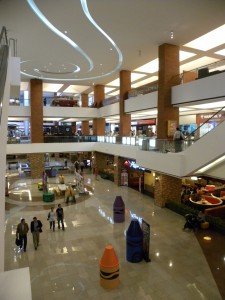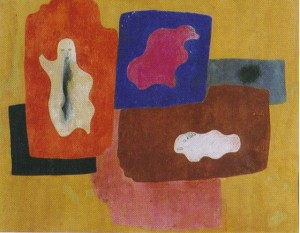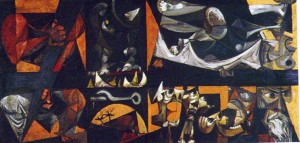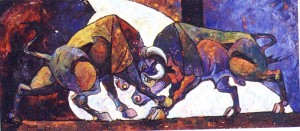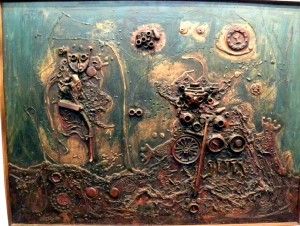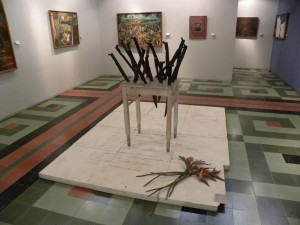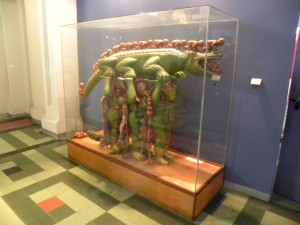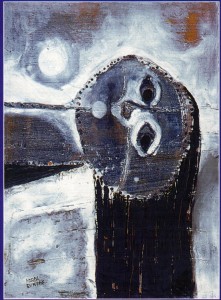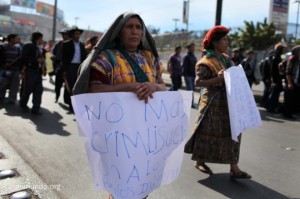Guatemala Part I Museums in Guatemala City
On the day we arrived in Guatemala, staying at this very pleasant hotel near the airport, President Otto Perez Molina announced that he wanted to decriminalize drugs and drug trafficking through his country. Other Latin American and Central American leaders also support reform of drug policies like President Santos of Colombia and Laura Chinchilla of Costa Rica. What a good idea!
But of course the US opposed it at the Summit of the America’s regional Latin American meeting in Cartagena Colombia, offering instead more money for “security”, our main export guns. The escalating violence in Central America and Mexico is related to the Plan Columbia that was like according to Greg Grandin, a “tsunami” just as those countries were coming out of years and years of devastating civil wars (also fueled and equipped by the US). In addition CAFTA ( Central America Free Trade Agreement) and NAFTA are destroying markets for local farmers, leading to a void filled by the drug market. Finally, as Grandin pointed out along with Ethan Nadelmann on Democracy Now, there are powerful forces in the US who benefit financially from the “drug war”.
But it gave the first day of our trip to Guatemala a positive feeling.
Two weeks after we came home we learned of a march by 15,000 campesinos and peasants who were demanding approval of bills that would protect their livelihoods from mining companies and other multinationals who were forcibly evicting them from their land and having protestors arrested.
So against those two bookends I will speak of our trip to Guatemala which was intended as a break from my continuous exploration of art and politics. I went there for the unusual purpose of a Yoga Workshop on Lake Atitlan with my exceptional instructor in Seattle, Douglas Ridings.
Before the workshop we went to five museums in Guatemala City, the Popol Vuh, a beautiful collection in a contemporary building that draws on motifs from Maya Temples, and paired with it the Textile Museum, which would loom large in our experience of Guatamala ( a fact we didn’t know on our first day). For more photos of the artwork inside the museums see my flikr site.
The next day we went to the National Museum of Archeology and Ethnology which had a mural by a modern artist in the lobby and a special exhibition about the site of Waku in Peten, School children were having a special event there also and were looking at their history.
At the National Museum of Modern Art/Carlos Merida, we saw some excellent painting and sculpture from the 20th century
and the Museum Miraflores
in the incredibly upscale Galerias Miraflores shopping mall which is on part of the site of the ancient city of Kaminaljuyu that thrived for almost 2000 years.
All of these museums were beautifully installed and full of information about Mayan culture. Popol Vuh (named after the Mayan Creation Story) included artifacts from two underwater sites from the bottom of Lake Atitlan and the nearby Lake Amatitlan.
The Textile Museum next to the Popol Vuh traced the history of textiles back to 5000 B.C. and the development of the back strap loom, still in use today. The Spaniards introduced sheep wool, silk and linen, and in the end of the nineteenth century chemical dyes were introduced.
Many changes have occurred since the 1970s including machine made embroidery, and the use of synthetic fabrics like rayon, but as we witnessed, the textile tradition today in Guatemala is still thriving.
Textile patterns are symbolic, one of the reasons the Spaniards feared this art expression. That may explain why in contemporary fabrics the arrangement of colors is always random as is the repetition of patterns. A motif is always varied by size, color, and other small details. But the sense of color is stunning. The basis of the colors is in botanical colors from plants, but the desire to create these beautiful textiles is an inherent aspect of Mayan culture for centuries (in neighboring Honduras everything is black and white) . It is wonderful to see these traditions still thriving after so many years of slaughter in the 20th century and during the years of Spaniard rule.
The countering of violence with art is stark in Guatemala.
The National Museum of Modern Art reflected the region’s deep roots in brilliant colors and abstract patterns: artists were making extraordinary sculptures and paintings in the modernist tradition throughout the 20th century. The best known is of course Carlos Merida,
but in addition there were artists Roberto Ossaye.Calvary, from 1953 is only one of many strong paintings from this era.
This is the work of Rodolfo Abularach The Shock 1956.
And then recent artists like Roberto Cabrera, This piece had a lot of found metal parts attached to it. It is called Transfiguration and it was created in 1969.
Efrain Recinos Grand Music 1970. The massive sculpture of wood was a combination of organ, tank and Mayan temple. I had to take the photograph on the sly and it was in the back of the museum, so the photograph doesn’t do it justice. He is a major contemporary artists in Guatemala. 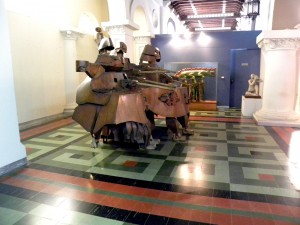
Erwin Guillermo has the piece in the foreground above called Que Pasa 1951. Margot Fanjul’s crocodile with small figures on its back and in its mouth. It seemed like a Holy Week icon processional icon, but in honor of Guatemala instead of religion. But it suggested a lot of struggle.
Magda Eunice Sanchez expresses the agony of the Civil War in Guatemala. Indeed Sanchez’s affecting image Girl with Her Hair in the Wind suggests the frozen fear of the ordinary person during this war that lasted from 1960 – 1996:
it killed 200,000 people, 83% Maya. 40,000 to 50,000 people disappeared and one and a half million were driven from their homes. It was later identified as a policy of genocide. Human rights violations were perpetrated particularly against women amidst the culture of violence, by Guatamalan army soldiers trained by the US. The US involvement goes back to 1953 when CIA forcibly removed Arbenz Guzman from office in 1954: from 1944 – 52 liberal economic reforms had strengthened civil and labor rights of the working class and peasants. Works in the museum suggested some of the agony of those years.
It is hard to imagine the horror of the Civil War after the horror of colonialism, slavery, slaughter. How did anyone survive. “Socialism” from 1944- 1952 was the only period when rights of the people were even considered.
And today, we have the people marching as they are being evicted from the lands by a new wave of multinational mining corporations. .
\
This entry was posted on April 30, 2012 and is filed under Guatemala.

